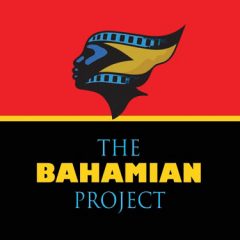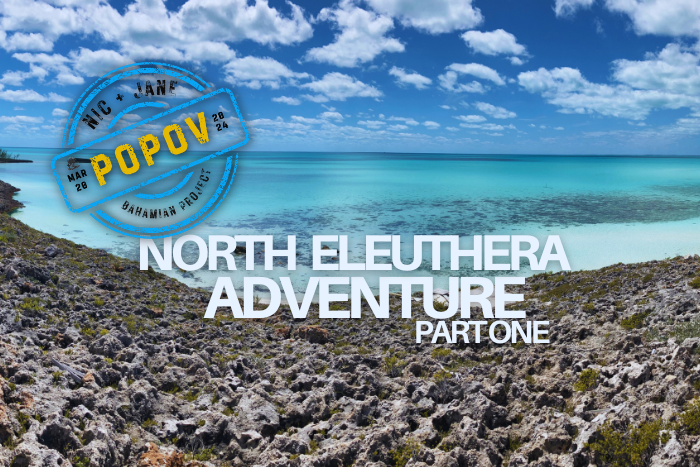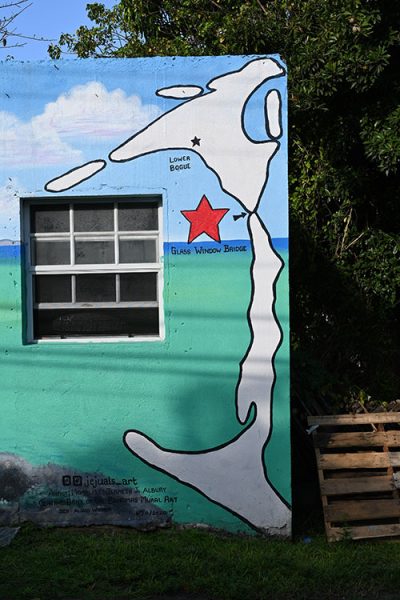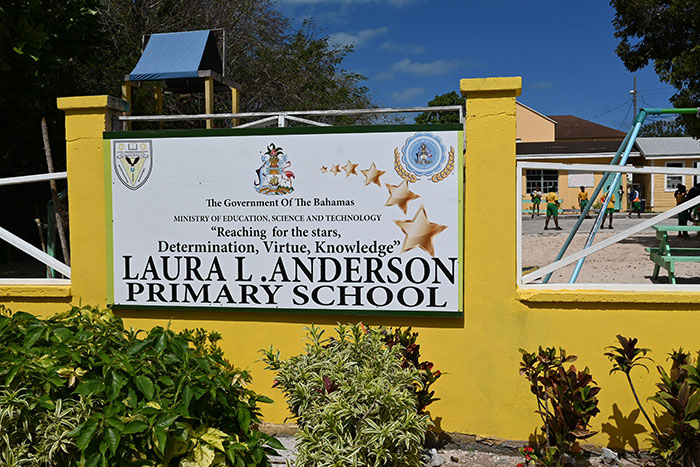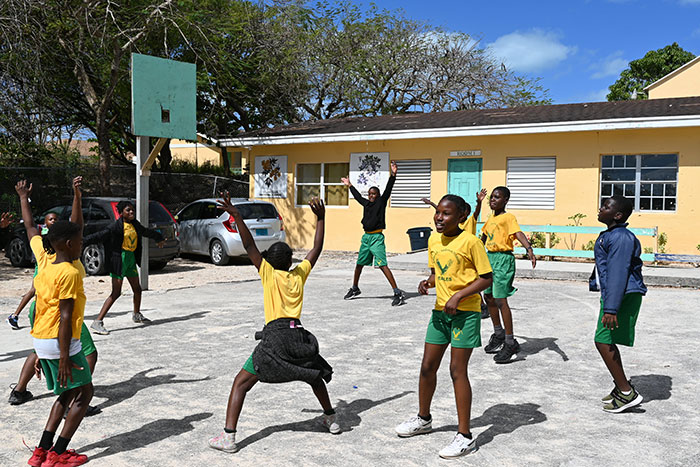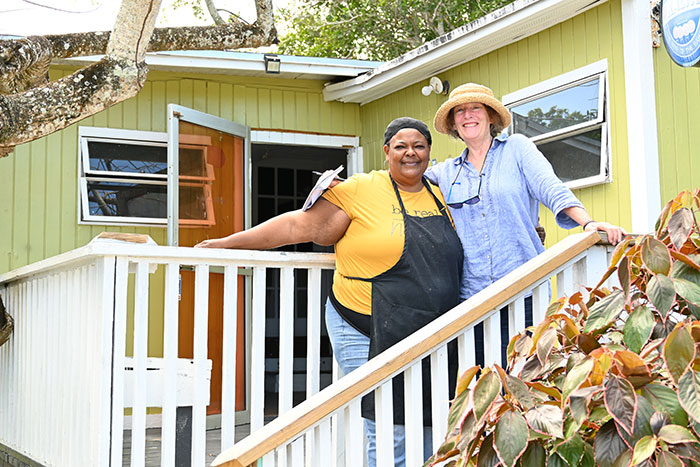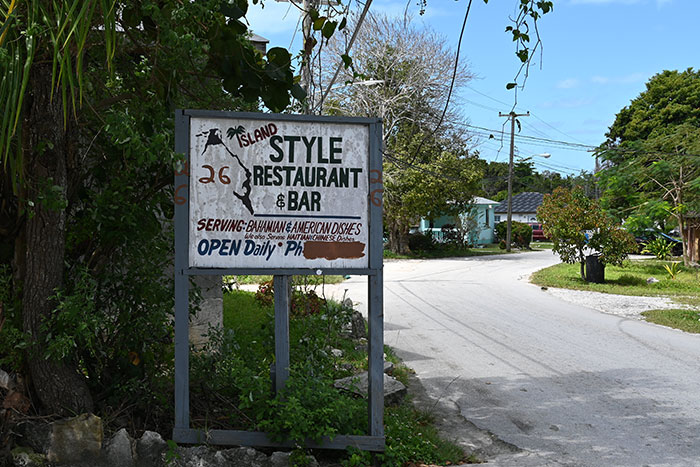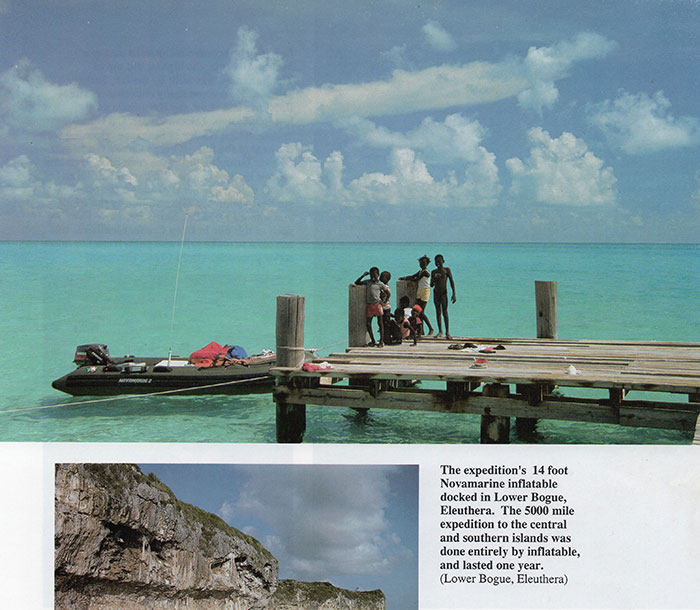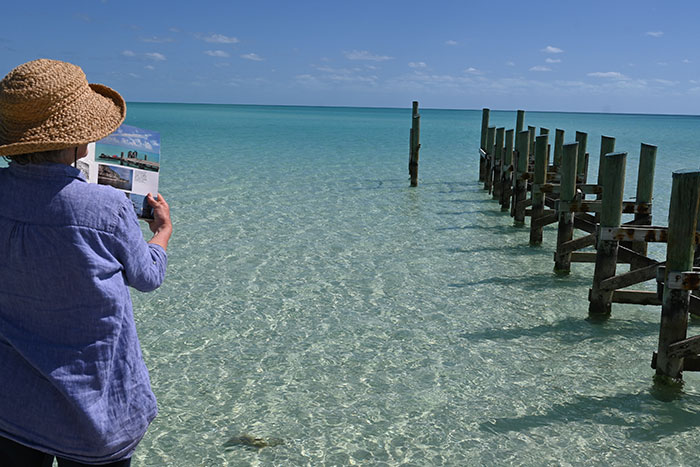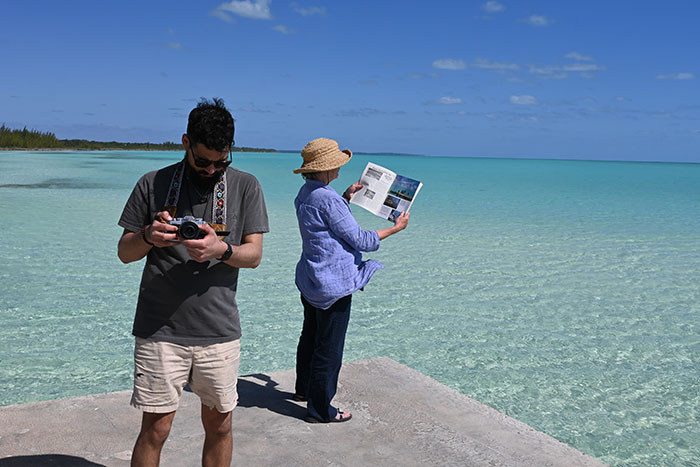Flying at dawn on Western Air to North Eleuthera is a fleeting experience: you go up, then, almost immediately, you come down.
There was barely time for the exquisitely demonstrated safety spiel before we found ourselves in the most welcome company of Mr Robert Thompson. ‘Mr Bone’s Car Rental’ summons up any number of possible images.
Is Mr Bone an old-time pirate who might greet us with a parrot on his shoulder? Or is he going to rent us a complete ‘bone-shaker’?
Neither were true.
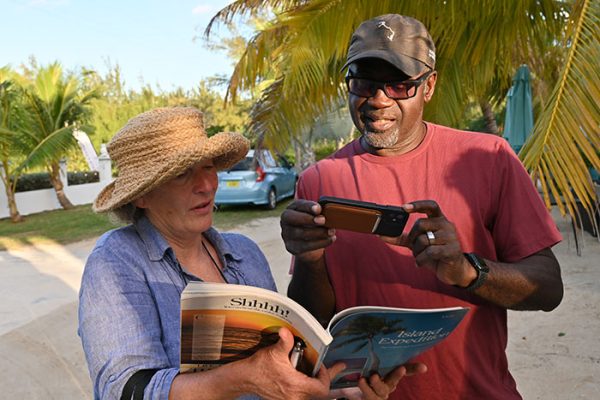
In fact, we found we had history with Mr Thompson.
Back in the 1980s, his father had run a food store and gas station in Gregory Town.
All these years later, we were able to show him images of members of the staff who Robert was delighted to see.
How to describe Eleuthera?
‘Long and thin’ is a good starting point. ‘Charming and varied’ also work.
Every settlement has its own distinct character, governed by history and geography and the quality of the soil.
We were charged with the task of investigating the settlements of North Eleuthera; both Nicolas and I had a lot of memories of the area—some shared and some completely separate.
Matthew—who joined us to shoot video and stills—had no previous experience of the island, so it was an added delight to see his reaction to what we found.
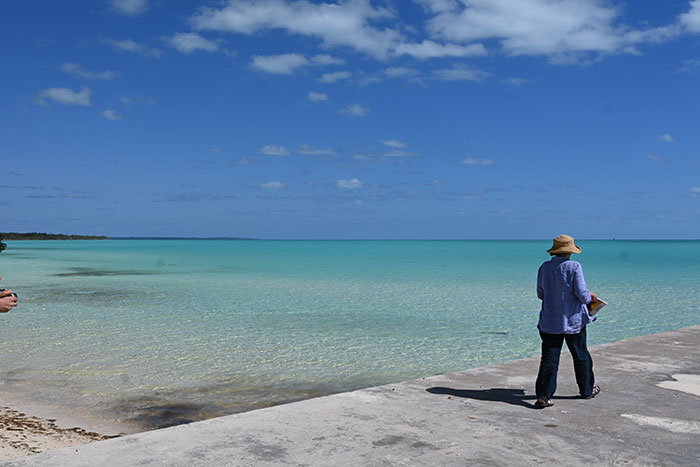
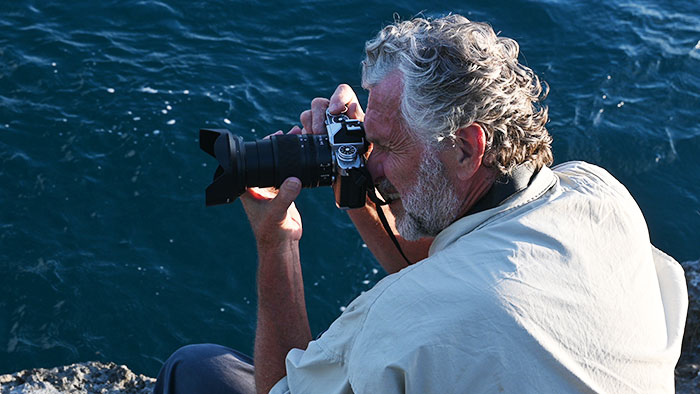
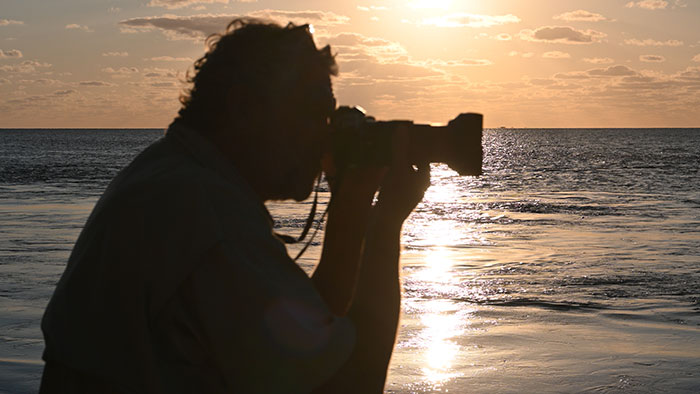
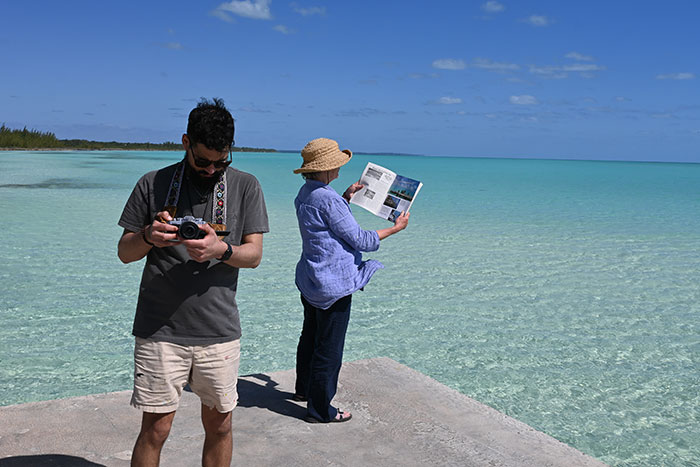
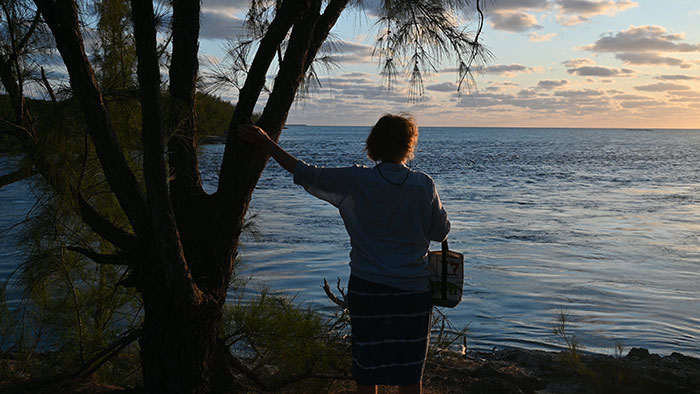
Where to start?
Well, we thought it might be good to visit sites at the extremities of our ‘patch’, so we headed for Preacher’s Cave.
Before we got there we had a chance encounter with a lady waiting by the side of the road.
As is the norm in the islands, we offered her a ride and she requested that we drop her at the entrance to a dirt track.
From the bush, we heard a Haitian sermon and, although intrigued, prying into it with our cameras seemed inappropriate.
The Haitian population on Eleuthera have been extremely important for many years and their community is strong.
Natural Phenomenon
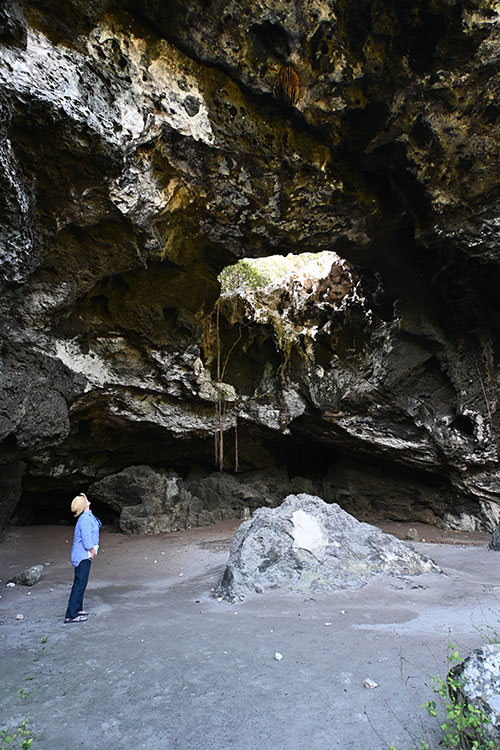
We continued past a healthy herd of goats and sheep and up an off-road track to Preacher’s Cave where, in 1648, the famed Eleutheran Adventurers crashed on the hazardous reef of the ‘Devil’s Backbone’ that fringes the shore.
It was easy to imagine them, already exhausted from the long trip from Bermuda, dragging themselves ashore and into the shelter of the cavernous limestone dome, which was to be their temporary home.
The Puritan group had fled from Britain in search of religious freedom.
Arriving in Bermuda, they were again chased off for refusing to swear allegiance to the crown.
Landing in such a disastrous manner was not the end of their problems as the harsh scrub, the heat and mosquitoes would have been intolerable.
Getting there before the slow stream of visitors that seek it out, we found the cave in the fresh morning light; tendrils of limp roots hanging from ceiling crevices to catch the falling moisture and lively bees sculpting beautiful natural hives on the pitted limestone walls.

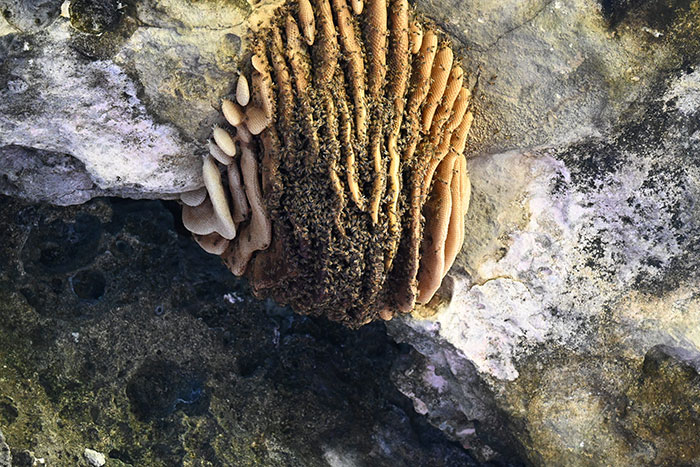
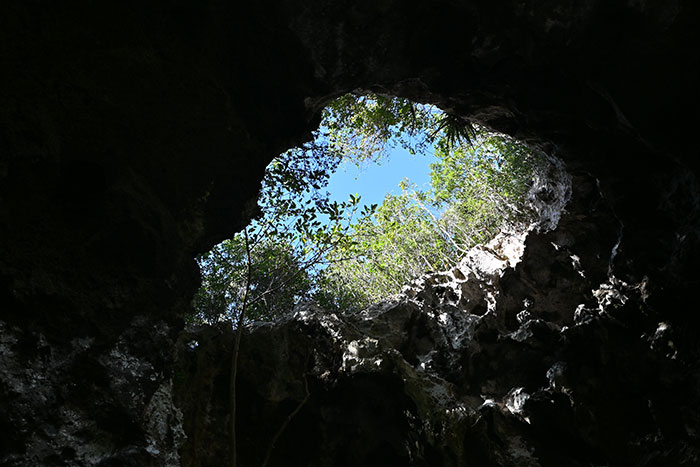
Further in, the limestone is pierced into perfect vertical holes—the work of thousands of years of slow and steady rainwater percolation – the sunlight pouring in, fringed by the lush vegetation above.
A natural cathedral; no wonder the offspring of those original die-hards gave thanks there annually for many years.
Contemplating the struggles this place had seen, we could hear the lapping water of the nearby shore and made our way along the cool verdant path to scramble over the dunes.
We could clearly see the jagged coral reef that to this day is only navigated by those with the knowledge.
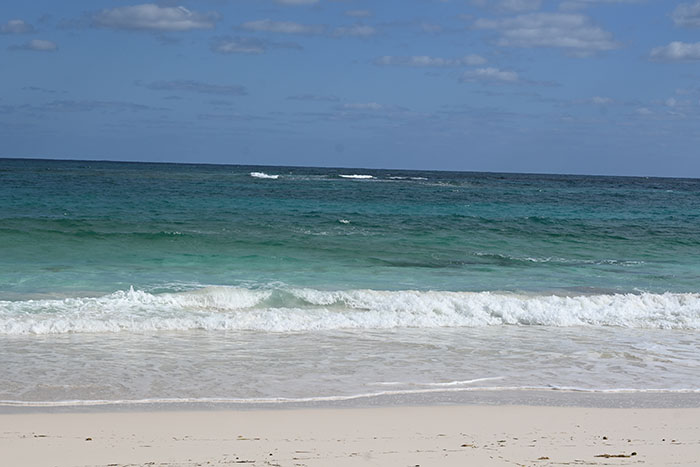
Sapphire Blue Hole
Inspired, and with heads (and cameras) full of images, we moved to our next natural wonder—the appropriately named Sapphire Blue Hole.
Seeing the colour and clarity of the water is unforgettable.
The enticing blues and the dappled light playing on the cool stone walls is quite mesmerising.
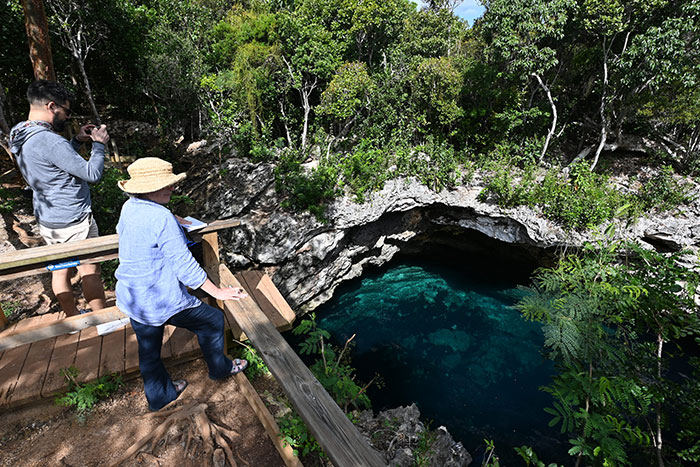
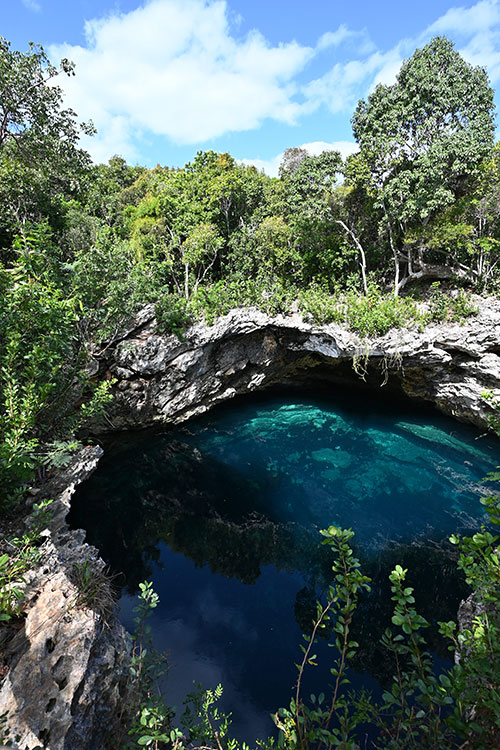
Nicolas did his classic Swan Dive, breaking the mirrored surface of the waters.
He found tiny red shrimp and crabs scuttling on the rocks as he eventually clambered up the rope ladder.
Finding Friends in the Bluff
We decided to take a ‘short cut’ to our next destination: The Bluff.
It turned out to be a narrow old path through the bush, but it brought its own delights; a tree laden with dilly fruit, a majestic sisal plant which stands as a reminder of the ancient rope making industry and the importance of the sisal fibres in its manufacture, some ancient and long abandoned classic cars that still held their stylish forms, but were close to crumbling.
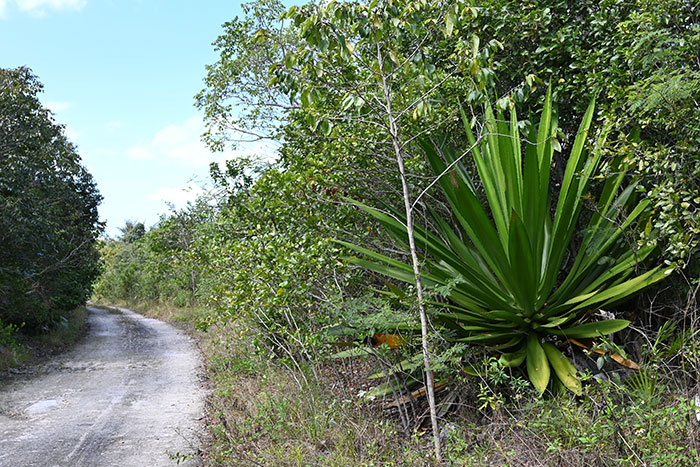
Quite abruptly, the narrow lane opened up and we were right in front of The Bluff’s Cemetery. We took our time reading the grave stones; Smith, Hudson, Saunders, Neely.
We knew a member of the Neely family and wanted to find out if any of his relatives were still living in the village.
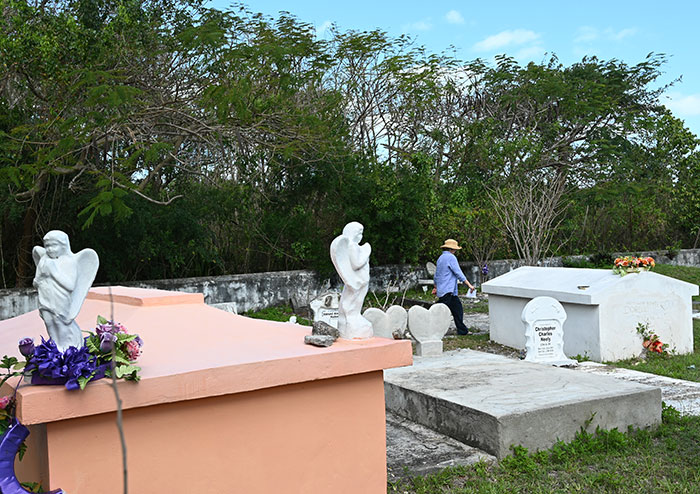
After a contemplative time amongst the family graves, we moved further into the settlement and found the older children of The Laura Anderson Primary School in the middle of a sports class.
We asked permission from the school security guard before taking a few pictures. She explained that there were 289 children registered in the school which went up to Grade 6. Students would then transfer to the High School in Lower Bogue.
We chatted some more and soon discovered she was one of the Neely family; a cousin of our friend. With Sarah’s instructions, we were soon hugging Catherine Neely at the Island Style Restaurant and catching up on news of her brother and his family.
We seemed blessed with coincidences.
But then again, that seems to be the way of things in the Bahamas.
There are Family (Island) connections just about everywhere.
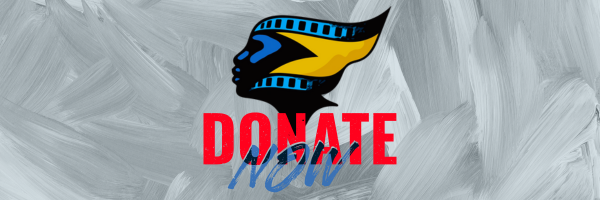
FoodPost Bahamas: A Farm in Eleuthera
We’d had several sources advise us that an interesting and up and coming initiative in North Eleuthera would be found close to the Harbour Island quay.
This unique and innovative farm has more to it than initially meets the eye.
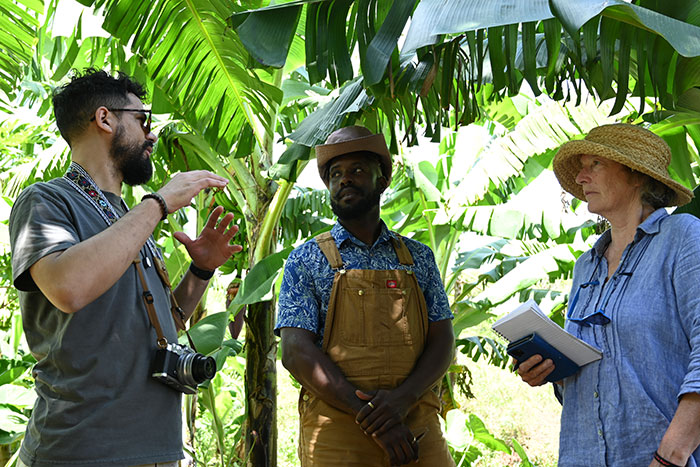
The community dump is not far from here. For many years, locals doing a run to unload their garbage would drop off heavy metal junk at a yard on the way.
It might seem an odd place for couple Richard Johnson and Sophia Blatch to transform into a homestead, but that is what they did.
They removed the rusting hulks of cars and machinery, started keeping 50 or so chickens, land crabs and live stock and S&R Farming was born.
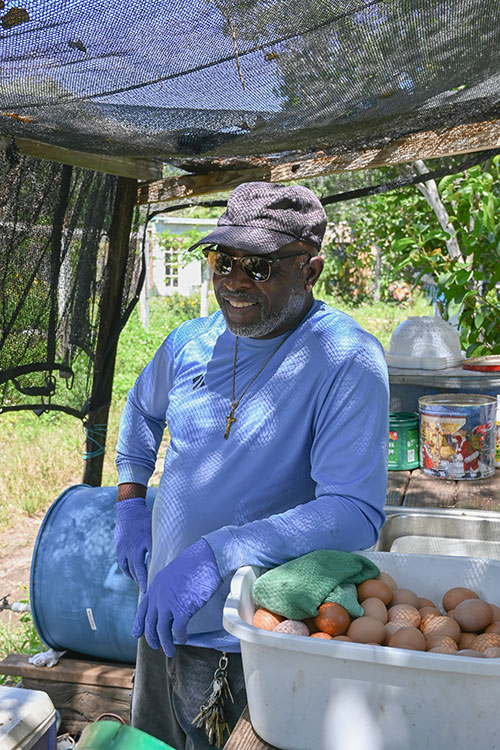
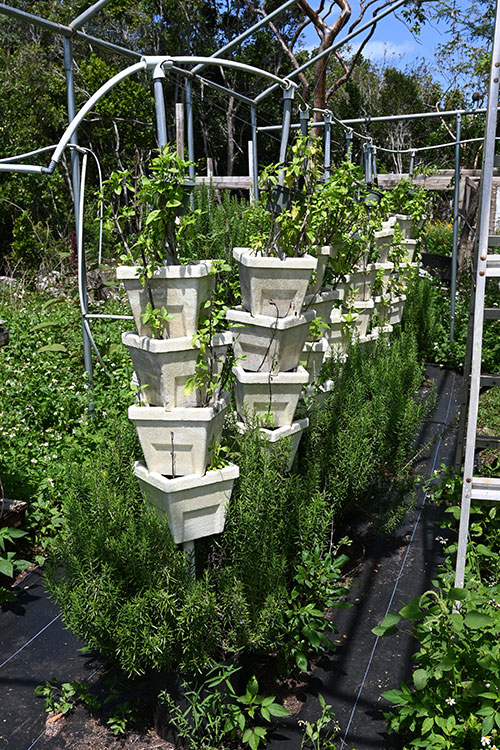
In recent years, the farm has diversified into a whole number of different projects across two sites; on the original land there are beehives, rabbits, goats and experimental vegetable plots where bright yellow flowers of Sun Hemp stand between rows of salad, fixing nitrogen in the soil and providing dappled shade for the tender salad crops.
A system of vertical planting and a water drip feed produces a cascade of basil, rosemary and mint and a greenhouse provides the perfect environment for growing plantain suckers to feed into the nearby second site.
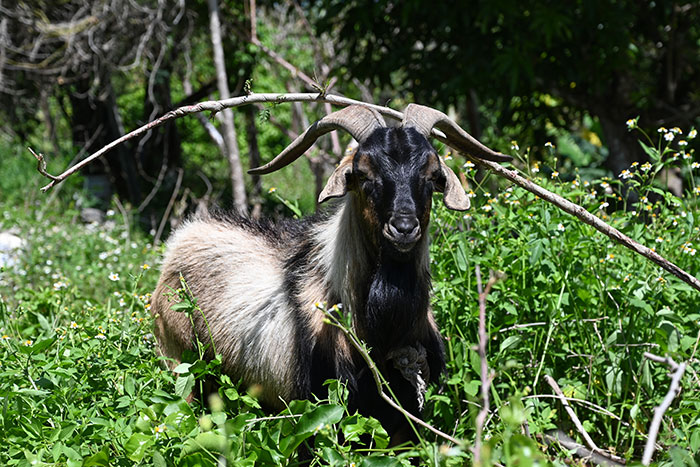
A short drive through the bush opens out to a magnificent grove of bananas, plantain, papaya, yam, cassava and taro.
An airy barn houses more than 500 chickens and every egg produced is in demand from the busy tourism trade on neighbouring Harbour Island.
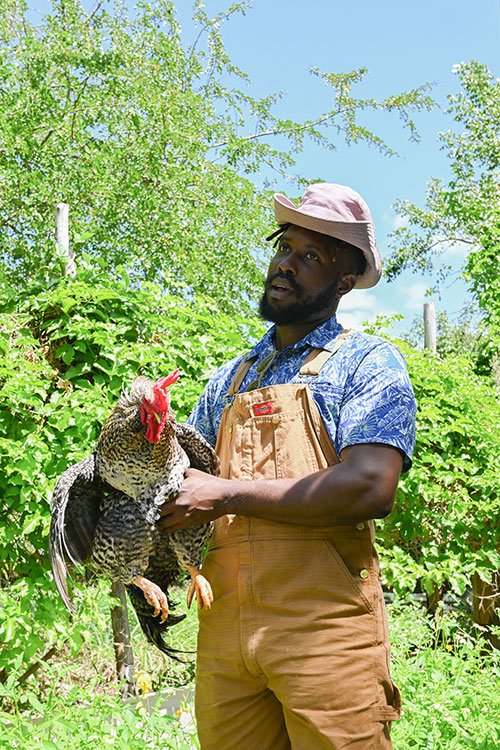
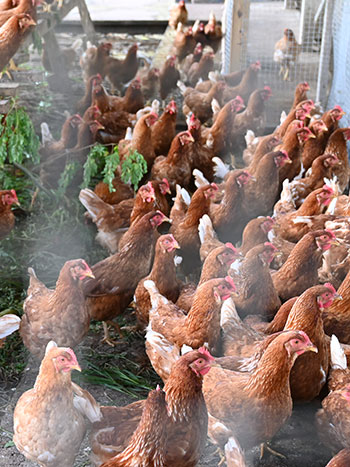
It might seem the farm is juggling ‘a lot of balls’, but many of the new ideas are coming from a young mind full of lots of expertise and energy.
In 2019, Sophie and Richard’s nephew, Dorlan Curtis, decided to see what his relatives were up to on the farm.
Having studied in the States, Dorlan worked as a paper scientist but decided to move back from Chicago, via Nassau, to the islands.
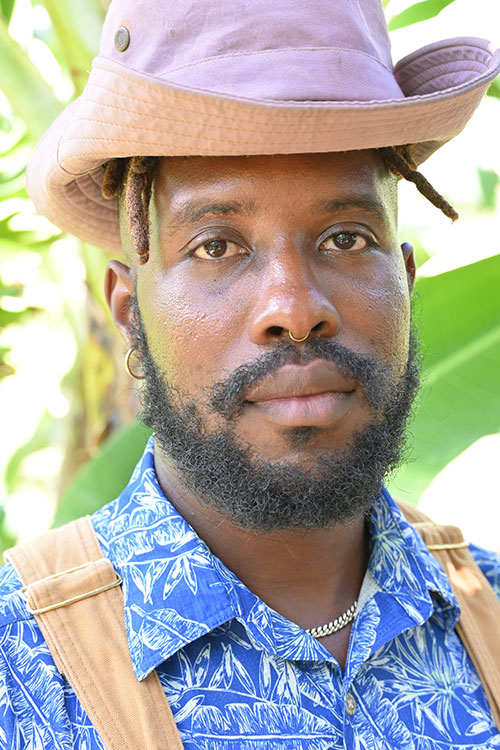
He brought with him a passion for sustainability—and worms.
He is now spending two days a week developing his ideas on the farm and the rest of the week working for the Island School in South Eleuthera exploring the properties of fungal growth as a means of producing degradable packaging; cutting edge work for a green future.
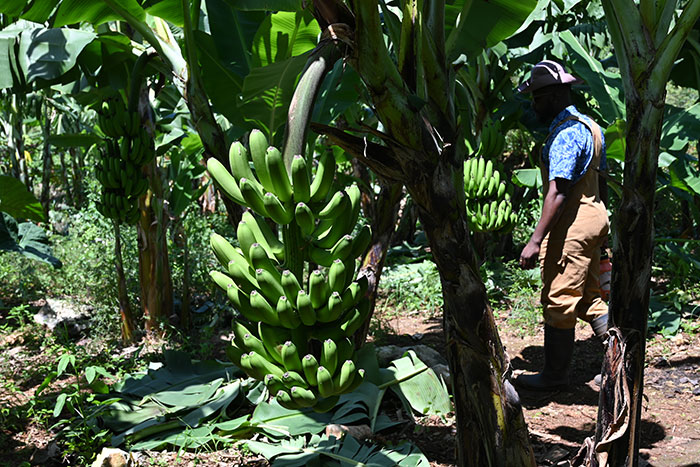
His skill in paper science has led to him recycling the fibres from discarded banana stalks to produce paper and he recently was involved in the Evolution of the Arc project using paper making methods to demonstrate the possibilities of recycling this very available and often underestimated material.
But what about the worms?
An effective ‘soil maker’ is the humble earth worm. Although North Eleuthera is blessed with very farming-friendly soil, compost worked by worms adds a great amount of nutrients and improves growing conditions.
Using the dung from the menagerie of animals, dried organic materials and time, Dorlan is improving the land constantly and even selling on compost to others wishing to grow their own crops.
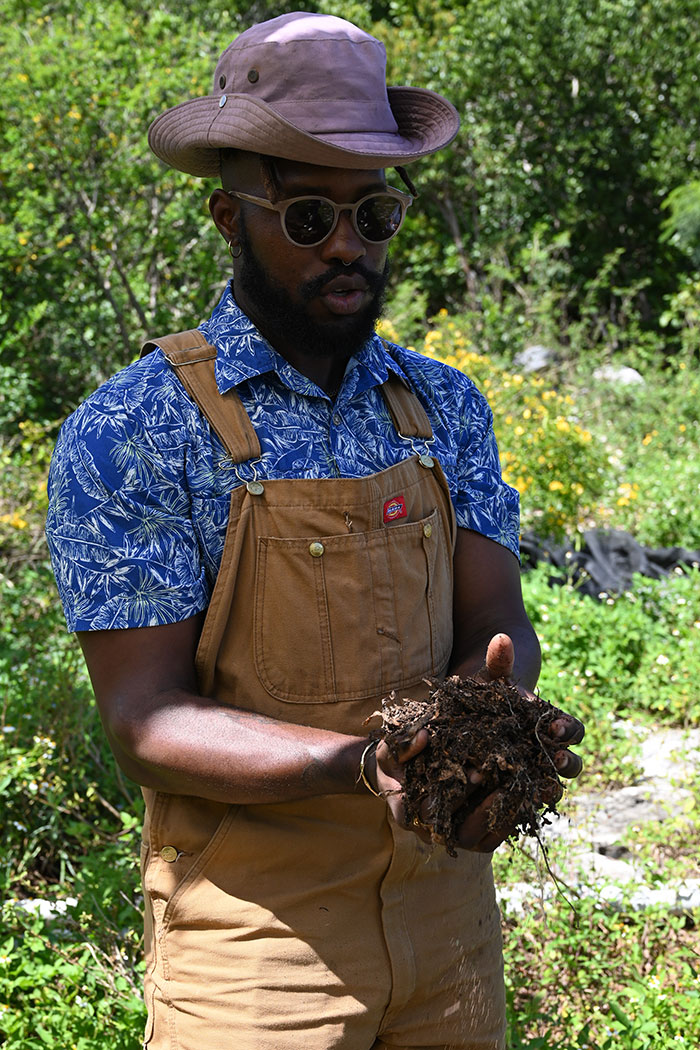
Now part of a Farmers’ Cooperative, the rebranded Food Post Farm is brimming with possibilities and Eleuthera seems to be regaining its reputation as a hub of agriculture. Dorlan explained that an annual Agricultural Show in Governors Harbour was gaining momentum.
The future of farming in Eleuthera is growing in the right direction!

Welcome Break: Lower Bogue
Dizzy with information and in need of sustenance, we headed down to Lower Bogue and sort out a hearty lunch.
They always say, if you want to eat well, look at where the locals eat, so working on that premise we got a great take-away from ‘Healthy Choice’ opposite the library.
We were soon sat in the cool shade of the casuarinas down by the abandoned dock and realised this was a spot Nicolas had landed at in his inflatable back in 1986.
The thin water had eventually made the landing place impractical for anything other than a very shallow draft boat and all that remained were the sturdy upright posts.
Lower Bogue was getting ready for their Homecoming next weekend.
The stalls were up and as we sat listening to the music of the wind through the pines we knew the scene would be very different when the celebrations get going.
Home coming is an important part of Bahamian culture; the place would be throbbing with the sound of music and banter.
Reconnections and catch-ups are all part of the joyful occasion, with a side order of good native food washed down with a Kalik.
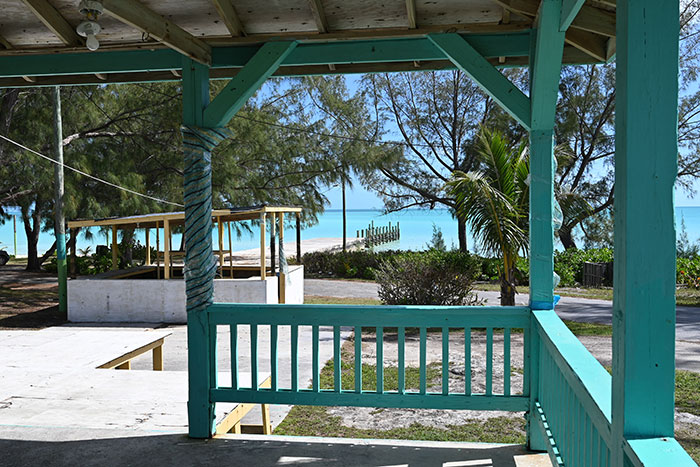
Good Night, Glass Window
We finished our day at the Glass Window.
Once an arch of limestone at the narrowest part of the skinny island, the natural bridge collapsed and has been replaced by a ‘slab’ of concrete which has about as much artistry as a slab of concrete can have.
Matthew did point out that the rusty patina had its own charm and I had to agree.
Here, the angry inky waters to the east almost spill over into the still calm turquoise of the sound to the west.
It is a bizarre effect and it’s hard to do justice to this unique spot in writing or pictures.
You just have to see it for yourself!
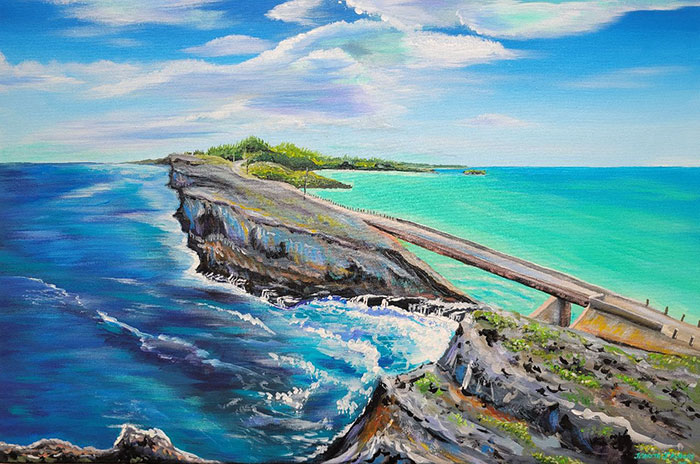
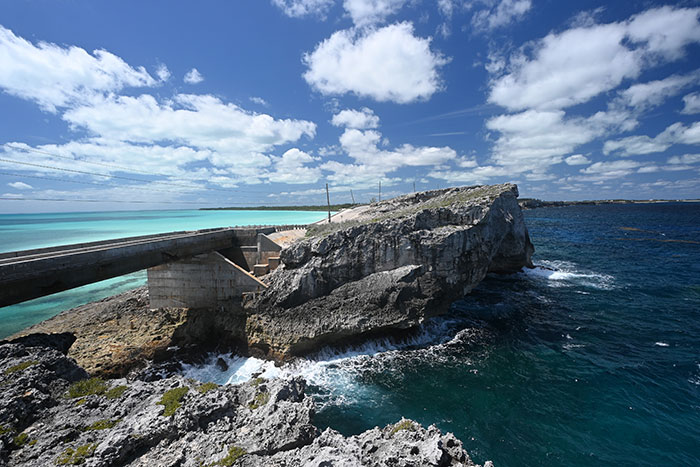

We watched a young boy and his dad enjoy another oddment of the Glass Window—the tiny blow hole that is connected to the ocean side sends spasmodic plumes of salty spray straight up into the air.
You get a bit of warning as you can hear the ominous sound of the spray as it passes a considerable distance through the limestone caverns, like an old salty seadog clearing his throat.
Then, quite suddenly, a gush of salt hits your face. The young boy giggled as his cap was lifted high in the evening air by the force.
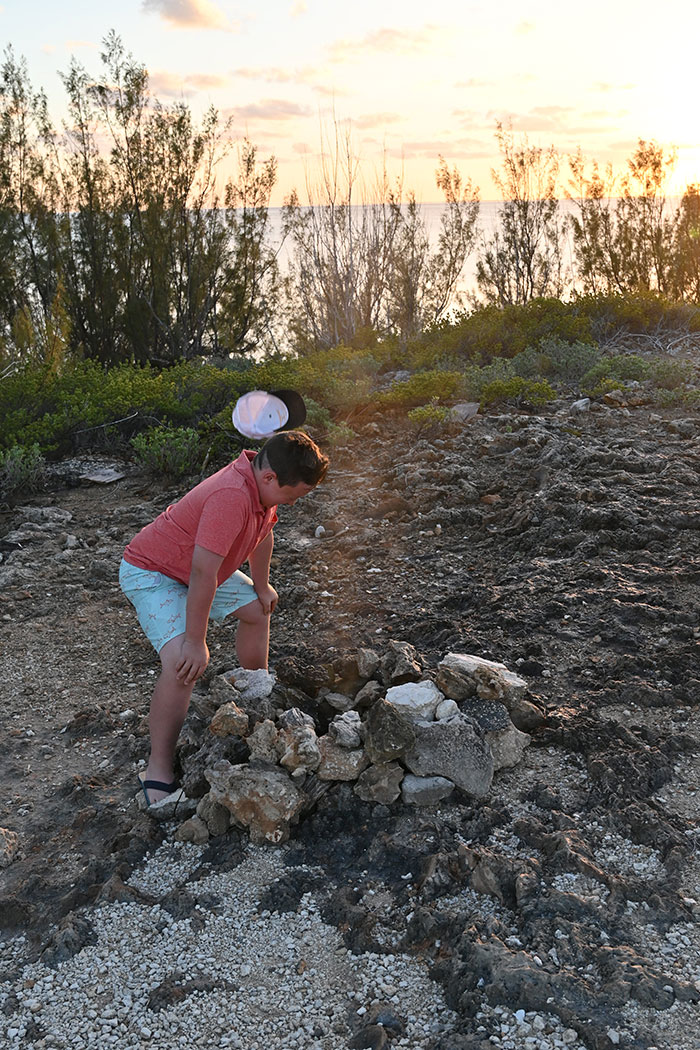
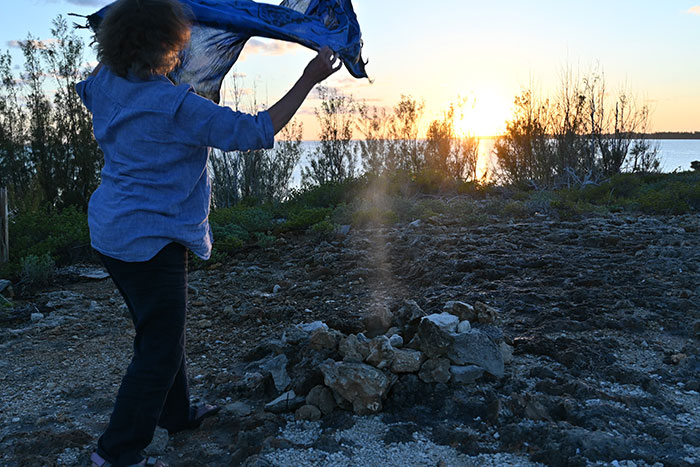
The sun dropped behind the point of The Current, which I was excited to visit the next day.
So many things to see, so little time to see them.
We were already thinking of when we could come back again as the last rays lit up the underbellies of the clouds.
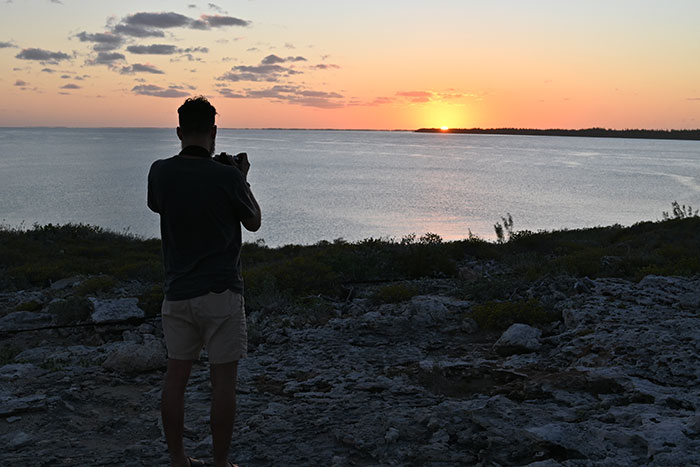
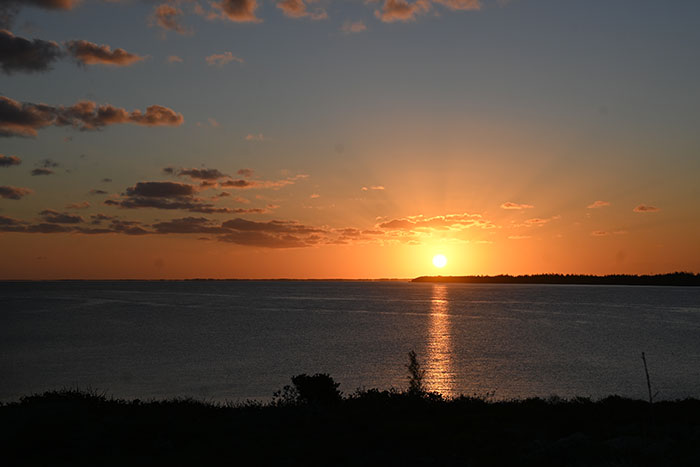
Written by: Jane Popov
Photos by: Nicolas Popov
Videos by: The Bahamian Project
The history and culture of the Bahamas are woven together by the lives of remarkable individuals—leaders, artists, activists, and everyday heroes whose contributions have shaped our nation.
Yet, without preservation, their legacies risk fading into obscurity.
By donating to The Bahamian Project, you’re helping ensure that their impact is never forgotten.
Every portrait. Every image. Every story serves as a bridge between generations, educating and inspiring future Bahamians while honoring those who paved the way.
Your support provides the resources to document these figures with the dignity and depth they deserve, creating a lasting visual archive that will stand as a testament to Bahamian history and identity.
Donate today—because a nation’s legacy is only as strong as its memories.

